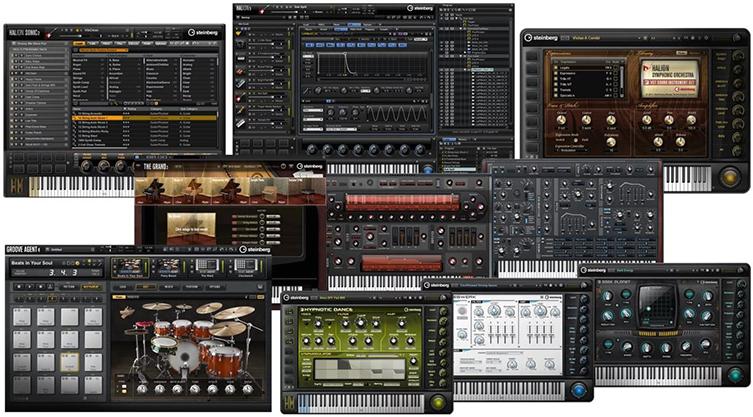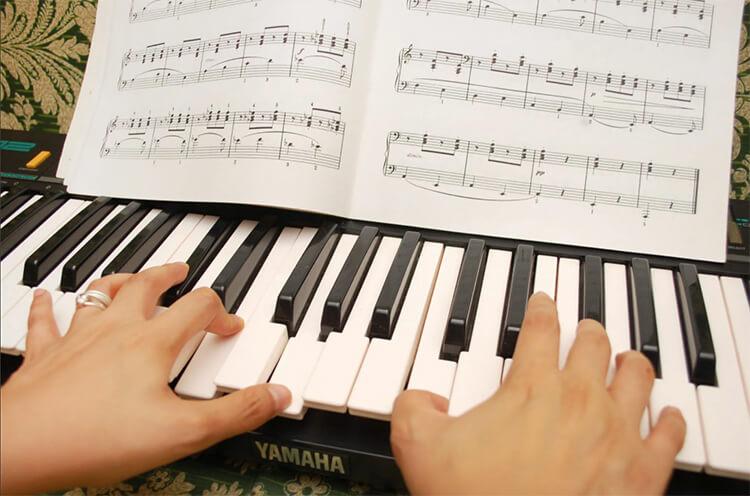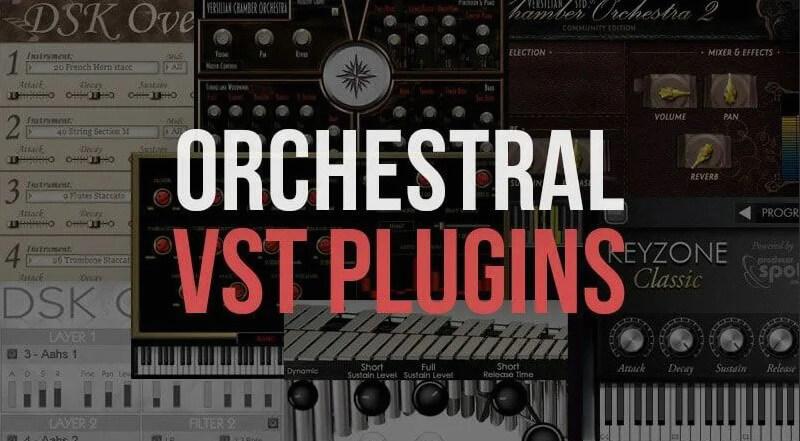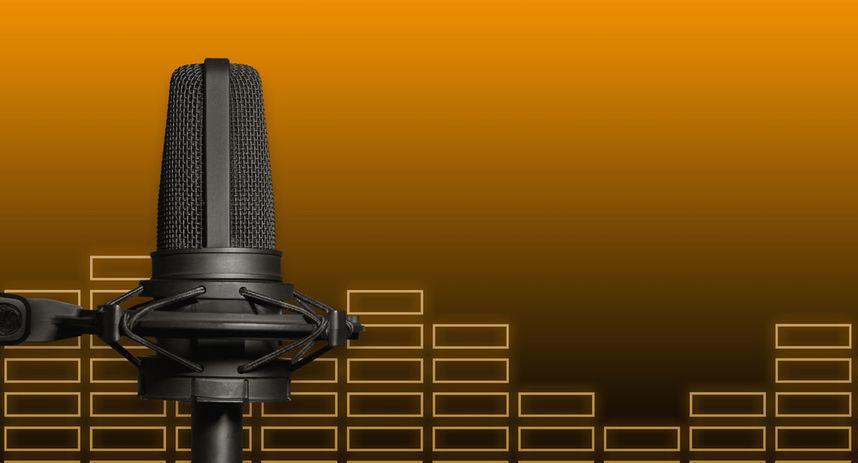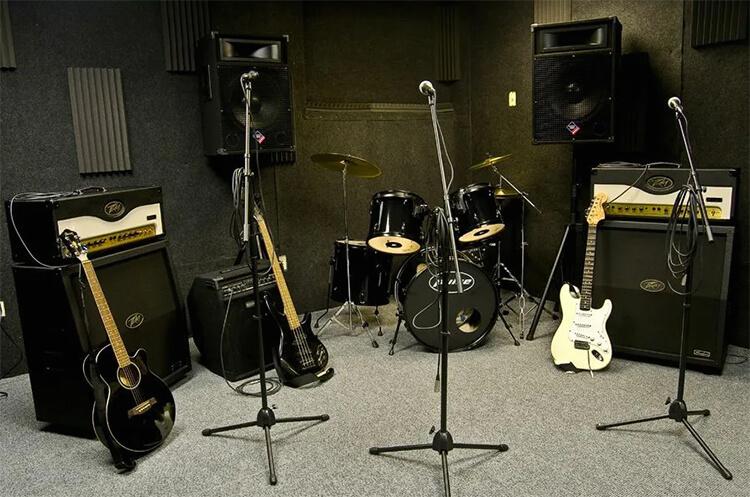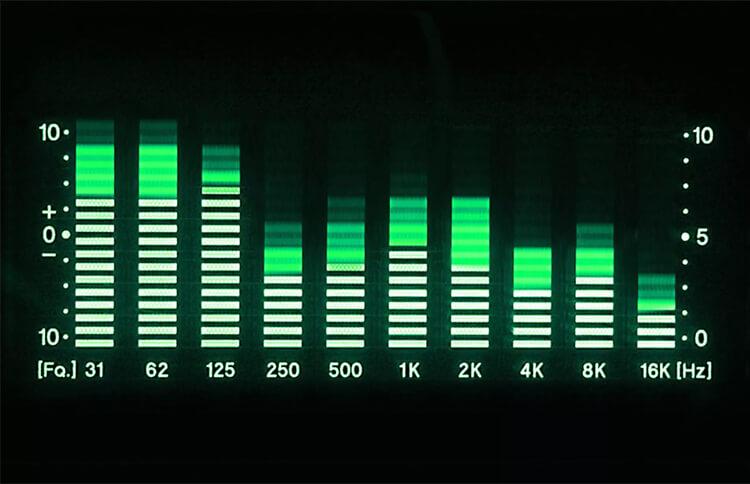Music production equipment

Choosing music production equipment is that not easy. At first it is not clear what exactly can be useful to you, what musical tasks you will have to solve, what difficulties you will have to face. At the same time at the initial stage we usually have a limited budget. So you need to buy only the essentials. But it is not yet known which devices we will need first.
Let’s try to figure it all out. We will determine what to focus on when choosing studio equipment. We will find out what sound engineers, arrangers, beatmakers and songwriters usually use. We will consider the main categories, models, types of hardware and software for production. We will try to understand what exactly we need.
As you read along, you will come across many names for music production equipment. But always remember: it is better to get by with minimal means than gather up a bunch of unnecessary widgets. Learn the devices gradually, take each piece apart. Only then you will be able to use them one hundred percent and get the maximum benefit.
Computer
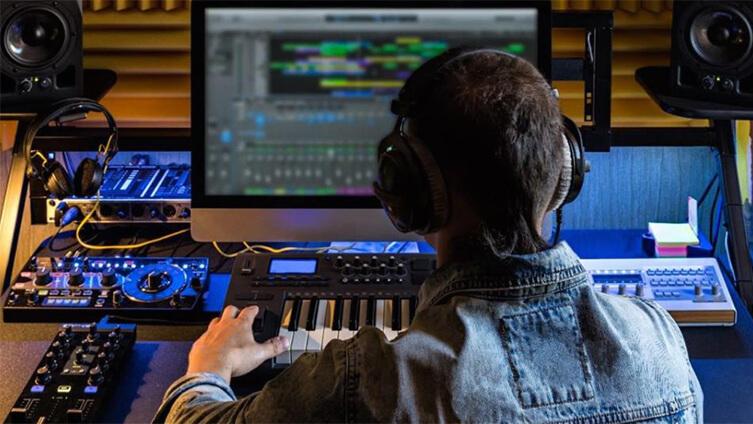
It is not necessary to buy a new device. A home computer on which you play, watch movies and type is also suitable as equipment for making music. To make projects for 5–10 tracks, any available hardware is enough. For complex settings and mixing multi-dimensional, rich compositions, you may need more powerful studio equipment.
The faster the processor, the more plugins you can run at the same time without lags. A large amount of RAM allows you to work in a multitask mode, switch between projects and programs without any problems. SSD also speeds up and optimizes your music production equipment. The number and format of ports are important for connecting external devices. Some sound cards support USB 3.0 or higher. And some even connect via Thunderbolt. So, this should be focused on when choosing a computer.
- Powerful processor;
- Bulky random access memory;
- SSD storage;
- Latest USB or Thunderbolt.
Sometimes you have to use a USB hub. As for other equipment, it does not greatly affect the creation of music, only the convenience of work. A good graphics card comes in handy if you are in the business of producing music videos and commercials. A large screen or connecting multiple displays will make it easier to navigate and work with complex, forked projects. It is not always possible to place a laptop and midi keyboards next to each other. But with a portable keyboard, studio equipment will fit tighter.
Which is better: a laptop or a desktop computer? Performance varies by configuration. But you can take your laptop with you wherever you go. With the laptop you can produce music while sitting in a park, cafe or on your friends’ couch. Online sequencers such as Amped Studio allow you to record music even on a tablet or a smartphone without installing any software. This is how mobile music production equipment becomes. And this is very convenient.
Sequencer
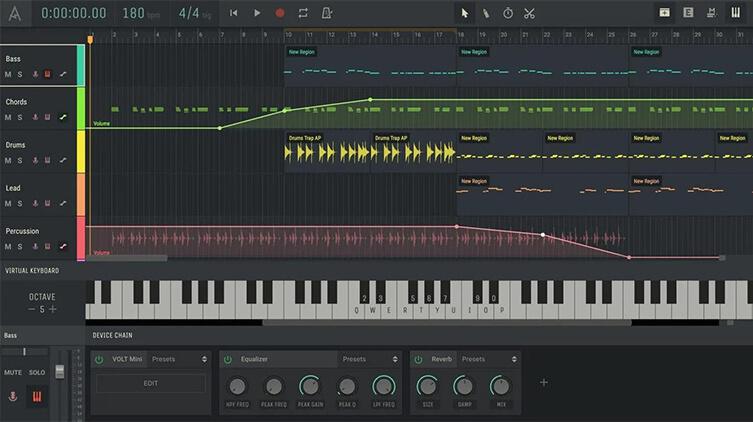
It is a specialized software for working with musical material. Sequencers differ in interfaces, functionality, and construction logic. But they are all designed to service music production equipment. And any of them can solve a standard set of problems.
- Live instruments recording;
- Working with midi instruments;
- Editing audio and midi;
- Processing tracks with effects;
- Mixing and mastering.
Some sequencers are more suitable for beatmaking. They are structured according to the pattern principle. You fill out the modules like on a drum machine, write a few rhythm patterns, and then combine them and collect the beats. In the process, you use loops, samples, virtual devices, and equipment of your studio. Such programs are emphasized on working with midi and VST instruments: samplers, synthesizers, slicers, loopers, drum machines.
Another format is programs that allow you to produce music in real time. They are usually used by DJs and electronic musicians. Such software is often synchronized with turntables, DJ consoles, and other equipment for creating music on stage. Working with the program is a live looping. You drop the sounds of individual instruments into the loop work area, and they are constantly played.
The third major variety is traditional recording, editing, and mixing software. This is a versatile studio software. We record tracks, edit them, enhance them with effects, level them in volume: that’s the whole production process in general terms.
Musicians choose a program based on their tasks and evaluating the convenience of its interface, functionality, and design. The programs of the first type are more suitable for beatmaking, while the programs of the second type are more suitable for live performances. Arrangers, sound engineers, and those who use analog equipment to create music tend to favor the third variety.
Online sequencers can be classified as a separate category. Amped Studio is suitable both for arrangers and for beatmakers, while it is distinguished by its mobility. This software does not need to be installed on a computer, it runs through an Internet browser. But it allows you to record tracks from microphones, midi keyboards, and other studio equipment.
VST plugins
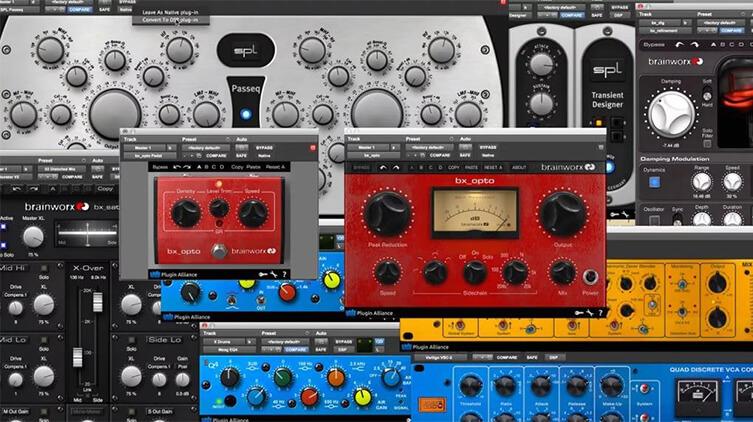
These are additional modules that run inside the sequencer and process tracks changing their sound. Almost every sequencer comes with a free set of plugins. For example, Amped Studio includes a drum machine, a compressor, a chorus, a reverberator and many other virtual instruments. Music production equipment in the form of software is required by arrangers, mix engineers, and beatmakers.
Plugins are divided into instruments (VSTi) and processing (VST). Instruments are connected to midi tracks and play the notes that are written in the pattern. A musician usually connects a midi keyboard, activates the VSTi on the track and plays the keys picking up the melody and harmony. Such virtual equipment at the studio is used by beatmakers, arrangers, composers, and songwriters. There are few types of such devices.
- Samplers;
- Synthesizers;
- Loopers;
- Drum machines.
But the effects are used both by those who create music, and those who work on sound, that is, sound engineers and mastering engineers. There is a lot more virtual music production equipment in this category.
- Compressors;
- Equalizers;
- Reverbers;
- Delays;
- Saturators;
- Chorus;
- Phasers;
- Flangers.
This is just a small part of the existing software. You may come across combined channel-strip devices, and emulations of various studio consoles, tape recorders, guitar combo amplifiers, etc. All this equipment at the studio serves for different tasks.
A compressor “compresses” the dynamic range making loud sounds quieter and soft sounds louder. Using it any part sounds dense with an even volume and does not jump out of the mix. An equalizer allows you to cut unwanted overtones and enhance beautiful overtones. These are the two most frequently used instruments of all virtual music production equipment.
The more powerful your processor, the more plugins you can run without slowing down. However, some audio interfaces offer their own built-in DSP effects, which use the resources of the interface and do not load the computer’s processor. By the way, an audio interface is another important piece of studio equipment you should pay special attention to it when equipping your studio.
Sound card
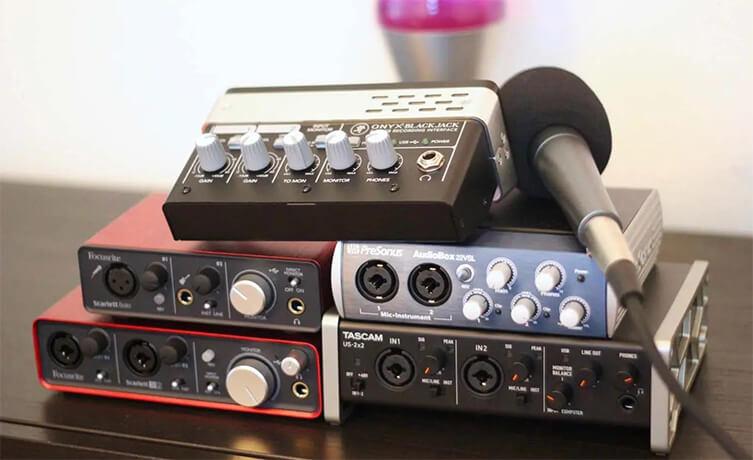
The main task of this technical device is to convert an analog signal to digital, and vice versa. To do this, it has ADC (analog-to-digital converters) and DAC (digital-to-analog converters). The former take sound from microphones, guitar pickups, and other music production equipment and convert it into digital code by recording it into a computer. The latter take a digital code, turn it into sound, and play it through the speakers.
Thus, the quality of conversion becomes the determining factor when choosing an audio interface. At the same time, the studio equipment must cover the needs of the musician. So the second most important characteristic is the number of inputs and outputs, as well as their format. For recording an electric guitar and voice, one microphone input and one instrumental input are enough. But when recording live drums, 10–12 microphone inputs are usually used.
Also, the pieces of equipment for creating music must be consistent with each other. If the sound card has balanced jacks as output channels, then the monitors should also have balanced inputs (for example, XLR). If the interface is connected via Thunderbolt, then make sure that the laptop or computer has an appropriate port. If your studio equipment includes condenser microphones, your audio interface should have a phantom power switch.
In some cases, you will need ADAT or S/PDIF digital channels, for example, to connect another card or preamplifiers and increase the number of inputs. Perhaps you have music production equipment with separate midi ports. If it doesn’t connect via USB, the audio interface should provide it with midi input and output.
Synchronization of hardware and software plays an important role. Today, many interfaces can transfer sound from input to output without delay. Some studio equipment can even process the signal with effects without delay. Audio cards are equipped with software mixers and high-end drivers to minimize delay. This point is also worth checking.
Monitors
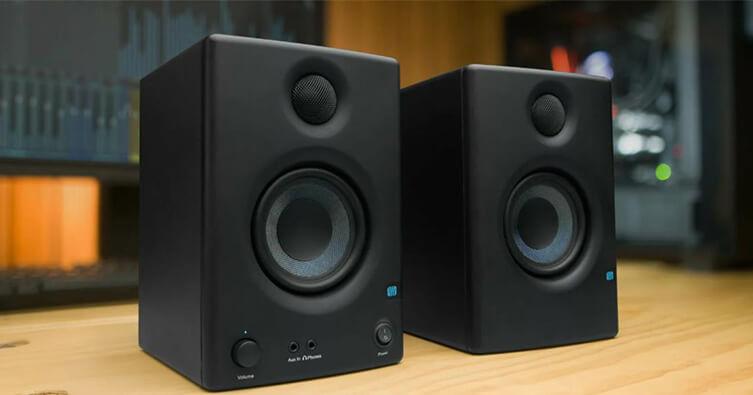
So, we have a computer with software for music production and a device that receives and outputs sound. This is the basic music production equipment. But we also need speakers for the sound to play. It seems that it is enough to connect ordinary speakers as everyone has them at home. But if even a home PC is suitable, it is not so simple with speakers.
The fact is that household speakers, even high-end ones, enhance the sound. Their task is to impress the listeners and give them a pleasant feeling. Monitors on the contrary are specialized studio equipment. They should not play beautifully, but transparently, honestly. This is the only way you will clearly understand what exactly needs to be corrected in the sound of an individual instrument or the entire mix. Speakers, though, will work for a sketch, musical idea, rhythm pattern, or melody.
Monitors as music production equipment are quite subjective. Different people have different sound perceptions. Plus, their sound is strongly influenced by the room. So here you have to listen and experiment. But there are also several objective parameters. Monitors differ in design, size of woofers and the presence of additional adjustments.
Many people recommend choosing studio equipment for a specific room. The larger the room, the larger woofer is needed to rock it. Conversely, large speakers in small rooms will drone. Not everyone agrees with this opinion. But one thing is clear: the larger woofers, the lower bass they are able to give. Bass reflexes enhance low frequencies. And if the monitors are equipped with additional controls, the amplitude-frequency response can also be further adjusted.
Thus, when choosing music production equipment, consider its characteristics, but trust your hearing first. There are many models on the market today that have been developed using specific technologies: with ribbon tweeters, DSP correction, subwoofers, etc. And the size of the speaker is not always the determining factor. By the way, it makes sense to buy separate monitors for working out the middle frequencies. In fact, ordinary speakers will not be superfluous among your equipment in a home studio. The more sources you use to test your mix, the better.
Headphones
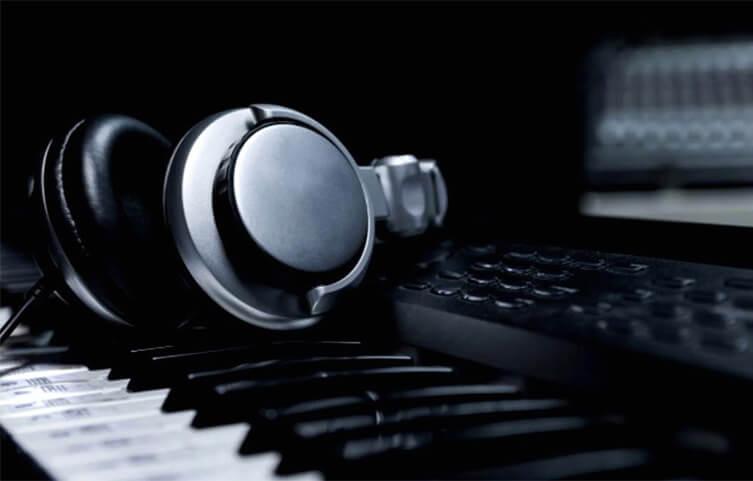
This is another monitor system that is desirable to be in your arsenal. There are also headphones for studio use and for home use. The difference is the same as for monitors: some transmit sound more honestly, others – more beautiful. There are closed, open and half-open types of studio headphones. There are also in-ear stage monitors. But they don’t belong to music production equipment.
Closed-type headphones are convenient to use when recording. The sound in them is directed exclusively to the musician’s ears and does not enter the microphone. This way you get a cleaner recording, without metronome clicking or chords on the track. Open-type ones, on the contrary, are less isolated, they are recommended to be worn for mixing, but not to be used in studio sessions. More versatile studio equipment is half-open headphones.
Headphones have small speakers, but oddly enough they sometimes allow better bass control than monitors with mid-sized speakers. So don’t worry if you can’t use a large room with a surround sound system. Headphones will help you out. Another advantage of this kind of music production equipment is the absence of interaction with the room. The sound of the monitors is distorted by the reflections and resonances of the room, but the headphones are not affected.
But they have another problem. They don’t give the correct stereo image. We get a “sound in the head” that changes significantly through the speakers. This does not bother everyone, but there is special studio equipment that corrects the sound of the headphones. You put a custom plugin on the master track of your sequencer, and it sounds like you’re using large monitors in an expensive studio. At least that’s the idea behind this software.
In general, even expensive headphones, along with a correction plugin, will cost less than average monitors. So the variety of music production equipment can help you save money. When choosing it, pay attention to the weight and fit of the structure. Head and neck get tired quickly from uncomfortable headphones. Of course, it’s better to come to a music store or showroom and try on different models, rather than order them over the Internet.
Midi keyboard

We went through the studio equipment that absolutely all musicians and producers use. The midi keyboard is not one of those devices. Sound engineers, mastering engineers, and songwriter guitarists can easily do without it. But this is a very useful device for keyboardists, arrangers, beatmakers, and electronic musicians.
This music production equipment also comes in different configurations. Some models are connected via USB to a computer, and some – via a midi port to a sound card. Keep this in mind when shopping and consider devices consistency. Also, you need a plugin for the keyboard to work: a sampler or a synthesizer that will provide sounds. This equipment does not sound for a studio by itself.
The midi keyboard transmits only some parameters to the computer: the note itself plus the time, duration and pressure. All this is recorded on the midi track, and after that the sampler reproduces these parameters. You can assign the settings of the sampler instrument or synthesizer to the keyboard controls directly in the sequencer. This music production equipment is highly flexible.
There are also minimalistic midi keyboards without controls. Devices in one octave without additional settings weigh little and provide mobility. It is convenient to take them with you on the road or to another studio. Keyboards with faders and knobs give you more options for live performances and automation. And devices with pads are often chosen when buying equipment for a beatmaking studio.
The midi keyboard can make production easy and fun. Assign a drum sampler to pads, keys to one of the harmony instruments, and knobs to settings and effects and produce music in live mode, looping a section of a track in the sequencer. You beat the drums part on the pads and play the bass on the keys. Then switch to a sampler with a different instrument and play a melody or harmony. Then turn the knobs, experiment with sound and have fun.
Microphones
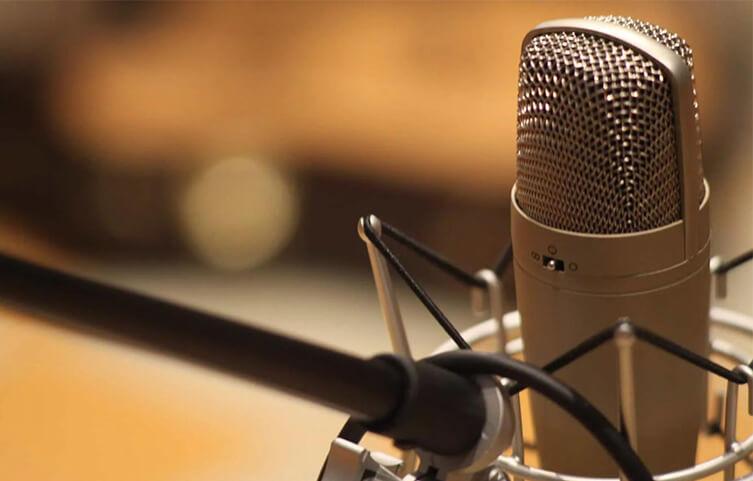
This is on the contrary a must-have equipment for a recording studio, but not obligatory for beatmakers and electronic musicians. Mastering engineers and sound engineers do not need them either, but often the same person does the mixing and recording. And it makes sense: sometimes certain technical and even creative problems are solved already at the recording stage. So those who do mixing are usually good at microphones.
This music production equipment is diverse. Microphones have different designs and application, they work according to different principles. A certain range of models is suitable for each task and each technique. Some are used to take sound from combo amplifiers, others are better suited for acoustic guitars, and still others – for vocals, etc. It is interesting to get acquainted with all varieties and to experiment. Here are some types of microphone equipment for a studio.
- Condenser;
- Dynamic;
- Belt;
- Lamp;
- Electret;
- Wide membrane;
- Narrow membrane;
- Cardioid;
- Hypercardioid;
- Microphones with a circular orientation.
For example, in order to record a drum room using M/S-technique, two microphones are taken: one with an “eight” directivity, the other with a cardioid. In this case, music production equipment is used in combination with software processing. The signal from the “eight” must be duplicated in the sequencer and reversed in phase. This will create a stereo side channel. A cardioid microphone gives a mid-channel. Now, by making the side louder, we are expanding our drums.
More traditional techniques are AB and XY recording. You will find many other stereo techniques if you wish. Also, electric guitars are often recorded in the studio using microphone equipment. Dynamic microphones with small heads take the sound from guitar combo amplifier. Sometimes they are supplemented with wide membrane condenser models. When the two tracks are mixed, the sound becomes rich and balanced.
Home music production equipment is usually limited to one condenser microphone for vocals. But this is not some kind of standard. Inexpensive dynamic models are great for some vocalists. Ideally, you should try several options and listen to which one works best with a particular voice. In any case, the ability of the vocalist is more important than the characteristics of the microphone.
What else you might need at the studio
The equipment in the studio needs commutation. The acoustic system is usually connected to the audio interface via TRS-XLR cables. For two monitors you need two wires. Microphones are usually connected using XLR male-female cords. You may also find jack-to-jack instrumental cables useful. This is how guitars are connected. You will have the cord for the midi keyboard along with it.
All music production equipment also needs to be placed on something. For large monitors, you need two reliable stands. The acoustic system of modest dimensions can be installed directly on the desktop. A stand for a midi keyboard would be nice to have as well. Using it you could find a comfortable height and keep the table free. Of all the studio equipment, microphone stands seem like the smallest trifle. But believe me, they will help a lot when recording.
A pop filter and a sound baffle are also useful for working with a vocal microphone. The latter will prevent reflections from penetrating your audio tracks. Other sound-absorbing devices that need to be used to decorate the room can also be considered a kind of studio equipment. These can be acoustic panels, foam rubber, bass traps, suspended ceilings, fleecy carpets, and heavy curtains.
Soft furniture also suppresses reflected waves. And in general, when choosing equipment for creating music, it is worth remembering about furniture. You will need a table on which you will place your computer keyboard and monitor. The smaller the countertop, the better: a wide, flat surface also produces a lot of reflections. But it is better to take a larger, softer and more expensive chair in which you will feel comfortable while working.
Once all the necessary equipment for a studio is installed and tested, arrangers and mix engineers begin to strive for more comfort. Various controllers help them in this. The midi console allows you to transfer all controls to the faders and make the mixing process more pleasant and accurate. There are even devices with one fader. Sound engineers also buy monitor controllers and trackballs for convenience.
Professional studio equipment

Perhaps the main advantage of an expensive studio is its large rooms with high ceilings and carefully calibrated acoustic finishing. Spacious tone-halls allow recording entire orchestras, while they do not introduce unpleasant resonances, but only decorate the sound. A well thought out control room provides the most transparent monitoring. And all this makes it appropriate to use premium music production equipment.
Since any acoustic instrument can be recorded in good sounding halls, expensive grand pianos, drums, and guitar amps are usually placed here. A rich park of microphones helps to elegantly solve sound engineering problems. There is a model for each instrument, style, character. The equipment in such studios works in conjunction with acoustics. Some studios even provide convertible spaces with movable panels and adjustable ceilings. Thus, you can not only select the instrument and microphones as accurately as possible for your purposes, but also adjust the sound of the hall.
As for the music production equipment that is located in the control room, it is also significantly different from the set of a home sound engineer. The main control in a traditional studio is not a computer, but rather an analog console with a huge number of channels. Each has a built-in equalizer and compressor. Therefore, no other equipment is required in the studio. But it is there.
Today, almost everyone is switching to plugins. Anyone who mixes at home will certainly use virtual instruments. But expensive professional studios provide analog compressors, equalizers, and tape recorders. This is the music production equipment that any aspiring producer and mix engineer would love to work with.
And another luxury that a well-designed control room can afford is multiple monitor areas. Classic studio format: near, middle and far field monitors. While at home we often hardly manage to organize only the near field. And the budget for equipment for the studio is usually somehow short.
Conclusion
We always have something to strive for. However, do not wait until you have the money for expensive appliances. Use what is available here and now. Technical constraints only improve your skills. They force you to seek creative solutions and achieve goals with minimal means. More powerful, more expensive, various music production equipment will gradually accumulate. And you will not notice how fast you have assembled an impressive collection.
Everyone started off with something. A home computer, a single-input audio interface, headphones, an inexpensive microphone, a few free plugins, an online sequencer – this set is already more than enough to write good material. The main studio equipment is your brain and your hearing. Hardware and programs should only serve as auxiliary tools, but not become the final aim themselves.
Some people get fully loaded with plugins and do not have time to get to know a single one. All their work becomes a sorting of effects: turned on one, twisted a little, turned off, turned on the other, etc. And some people buy a single plugin and work with it for a month: they use different instruments, study how each knob changes the sound, experiment, try to squeeze out the maximum. As a result, they know their music production equipment inside out. It is up to you to decide which category you belong to.

